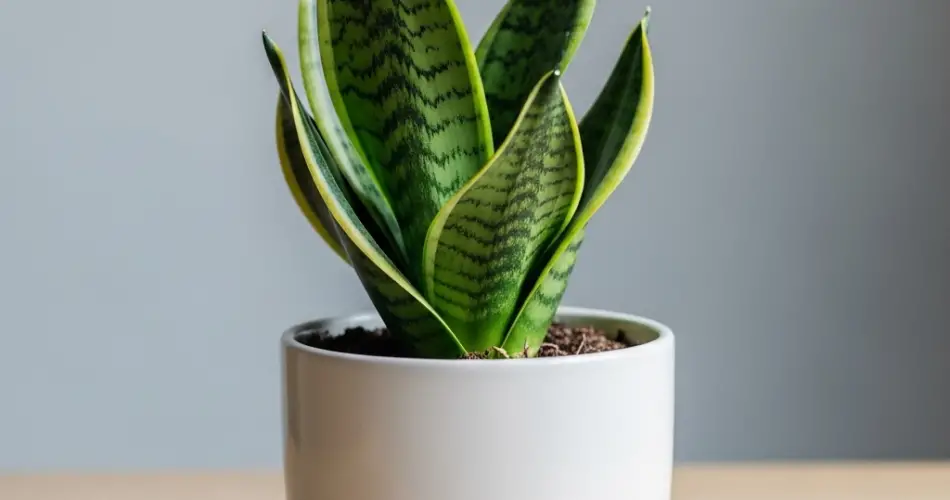The snake plant (Sansevieria), also known as mother-in-law’s tongue, is a remarkably resilient and low-maintenance plant that has gained popularity as both a decorative houseplant and an outdoor garden addition. Known for its upright, sword-like leaves and air-purifying qualities, snake plants are perfect for backyard cultivation—even for those who want minimal effort with maximum results.
If you’re looking to grow snake plants in your backyard and want to maximize your yield with zero hassle, this guide will walk you through everything you need to know—from planting and care to propagation and harvesting.
Why Grow Snake Plants Outdoors?
Snake plants are hardy succulents that thrive in a variety of conditions, especially outdoors in warm climates. Growing them in your backyard allows for more space and potentially faster growth than indoor plants, thanks to natural sunlight and airflow.
Benefits of growing snake plants outdoors include:
-
Low maintenance: They require minimal watering and fertilizer.
-
Air purification: Snake plants absorb toxins and release oxygen, improving outdoor air quality.
-
Pest resistance: Their tough leaves deter most pests.
-
Multipurpose use: Leaves can be propagated easily, and mature plants provide decorative greenery year-round.
Selecting the Best Spot in Your Backyard
For maximum yield, location is key.
-
Sunlight: Snake plants prefer bright, indirect light but can tolerate partial shade. Avoid full, harsh sun which can scorch leaves, especially in very hot climates.
-
Soil: They thrive in well-draining soil. Sandy or loamy soil enriched with organic matter works best. Avoid heavy clay soil that retains water.
-
Space: Give each plant at least 12-18 inches apart to allow for growth and air circulation.
Planting Your Snake Plants
You can plant snake plants from nursery-bought young plants, leaf cuttings, or divisions from existing plants.
-
Nursery plants: Dig a hole twice as wide as the root ball, place the plant, and fill with soil.
-
Leaf cuttings: Cut a healthy leaf into 3-4 inch sections, allow them to callous for a couple of days, then plant in moist, well-draining soil.
-
Divisions: Separate the root clumps of mature plants and transplant them.
Planting in spring or early summer is ideal for active growth.
Watering with Zero Hassle
Snake plants are drought-tolerant and prefer to dry out between waterings.
-
Water deeply but infrequently—once every 2-3 weeks is usually sufficient.
-
Overwatering can cause root rot and reduce plant vigor.
-
During rainy seasons, you may not need to water at all.
Using mulch around the base helps retain moisture and prevent weeds with less effort.
Soil and Fertilizer Tips
While snake plants do well in poor soil, providing nutrient-rich soil encourages faster growth and more leaves.
-
Amend planting soil with compost or aged manure for natural nutrients.
-
Fertilize once or twice during the growing season with a balanced, slow-release fertilizer.
-
Avoid over-fertilizing, as excessive nitrogen encourages leaf growth but weakens roots.
Pruning and Maintenance Made Easy
Snake plants require little pruning, but occasional trimming promotes a neat appearance and healthier growth.
-
Remove dead or damaged leaves at the base using clean scissors.
-
Thin crowded clumps by dividing plants every 2-3 years.
-
Cleaning leaves occasionally with a damp cloth helps the plant breathe and absorb light.
Propagation for More Plants
To maximize yield without hassle, propagation is key.
-
Leaf cuttings: Root leaf cuttings in soil or water to grow new plants.
-
Division: Divide mature clumps to create new plants.
-
Propagation not only increases plant numbers but rejuvenates older plants for better yield.
Pest and Disease Control with Minimal Effort
Snake plants are naturally pest-resistant, but occasional issues can arise.
-
Check for mealybugs, spider mites, or scale insects.
-
Treat infestations with insecticidal soap or neem oil sprays.
-
Avoid overwatering to prevent fungal diseases like root rot.
Maintaining proper spacing and good airflow reduces the risk of problems.
Harvesting Snake Plant Leaves
Snake plant leaves can be harvested for decorative uses or propagation.
-
Cut mature leaves at the base using clean tools.
-
Harvesting encourages new growth and keeps the plant healthy.
-
Leaves can be used for natural air purification or crafted into household items in some cultures.
Seasonal Care Overview
-
Spring and summer: Active growth period. Water moderately, fertilize, prune, and propagate.
-
Fall and winter: Slow growth. Reduce watering and avoid fertilizing.
-
Protect outdoor plants from frost in colder climates by covering or moving containers indoors.
Troubleshooting Common Issues
-
Yellowing leaves: Usually a sign of overwatering or poor drainage.
-
Wilting or soft leaves: Indicates root rot or pest damage.
-
Slow growth: May be caused by insufficient light or nutrients.
Adjust watering, improve soil drainage, and ensure adequate sunlight to resolve these problems.
Summary: Zero-Hassle Tips for Maximum Snake Plant Yield
Maximizing snake plant yield in your backyard requires minimal work but attention to a few important factors:
-
Choose a well-lit, well-draining spot with ample space.
-
Plant healthy nursery plants, leaf cuttings, or divisions.
-
Water sparingly and avoid overwatering.
-
Use nutrient-rich soil and light fertilization.
-
Propagate regularly to increase plant numbers.
-
Perform minimal pruning and clean leaves occasionally.
-
Monitor for pests and diseases but expect very few problems.
By following these simple steps, you can enjoy a lush, vibrant snake plant collection in your backyard that requires almost no hassle, yet rewards you with beautiful foliage, easy propagation, and improved air quality.



